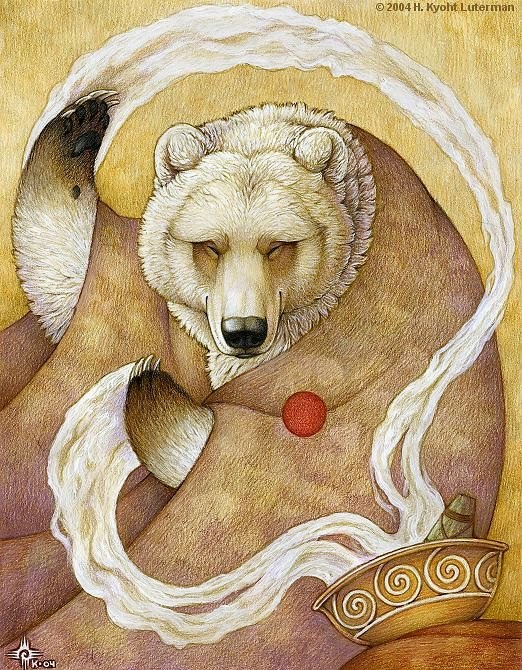This story is for a follower who had a passing encounter with a Puma. Nothing happened, but he never forgot it either.
Tale of The Boy Who Married A Mountain-Lion
A little boy often told his parents that he was a red mountain-lion. No one believed him, but they called him Red-Mountain-Lion. When he grew to manhood he was a successful and famous hunter. He went off alone for days at a time and always brought back much game. One time it was noticed that he acted queerly when he returned from the hunt, and so the next time he went his brother followed him. He tracked him through the timber up the rocky side of a mountain. He heard voices among the rocks, but could not see any one. He climbed on until he saw just above him a cave in the side of a steep wall. He looked in and saw his brother in there with a female mountain-lion. He went home and told what he had seen. After a few days Red-Mountain-Lion came home and acted stranger than ever. One time he heard some men talking about going to the cave and killing a mountain-lion that some of them had seen there. The man started out at once and alone to hunt, and he went straight toward the cave.
The men started out to hunt the next day, and when they came to the cave they saw the foot-prints of a man and a mountain-lion leading away from it. They tracked them down the mountain and up another, and then they gave up and returned to their homes. The man did not return to his people, but many years afterward he was captured by a hunting party and carried to his home. He decided to stay at his home then. One autumn he and his brother decided to form a war party. The brother was to be the leader, and so he went off to get some power before starting. He wandered about alone until he found a rattlesnake skin and a red mountain-lion’s tail. He took them and then prayed to the rattlesnake and red mountain-lion for their powers. Then he returned home and hid the skin and mountain-lion tail, for he did not want his brother to know what he had. For some reason or another, the war expedition was given up. Then the man should have thrown away the skin and tail, for the animals always want their gifts returned if they are not used for the purpose they have given them. If they are not used or returned something always happens to the man who has received them or to some member of his family.
A long time after the war party had been given up Red-Mountain-Lion awoke one morning and heard a turkey cackling. He slipped out to catch the turkey, and while he was slipping upon the turkey he heard a rattlesnake by the side of him. He moved away and heard another. Again he jumped aside and heard still another.
The woman prepared the morning meal and waited a long time for Red-Mountain-Lion to return; then his brother was sent to look for him. His brother found him unconscious and called some men to help carry him to the lodge. Red-Mountain-Lion was scalped, but the only tracks that could be found were those of a mountain-lion, and they were only around his head, and did not come from or lead to any place. They sent for the medicine-man. He came and after he had examined Red-Mountain-Lion he asked his brother if he had not planned a war expedition and prayed for power and received gifts from the animals. The brother admitted that he had. The medicine-man told him to return the gifts to the woods where he had found them, and told him that his brother should have known better than to have kept them. The man obeyed, and then they took Red-Mountain-Lion to the creek and bathed him, and he recovered, but he was always foolish. He lived to be an old man, but some one had to kill him in his old age, because he became more foolish and did many evil things.
Tweets from https://twitter.com/UnifiKshuNaShun/lists/tweets-for-blogs




